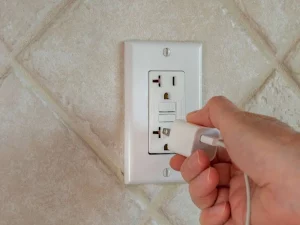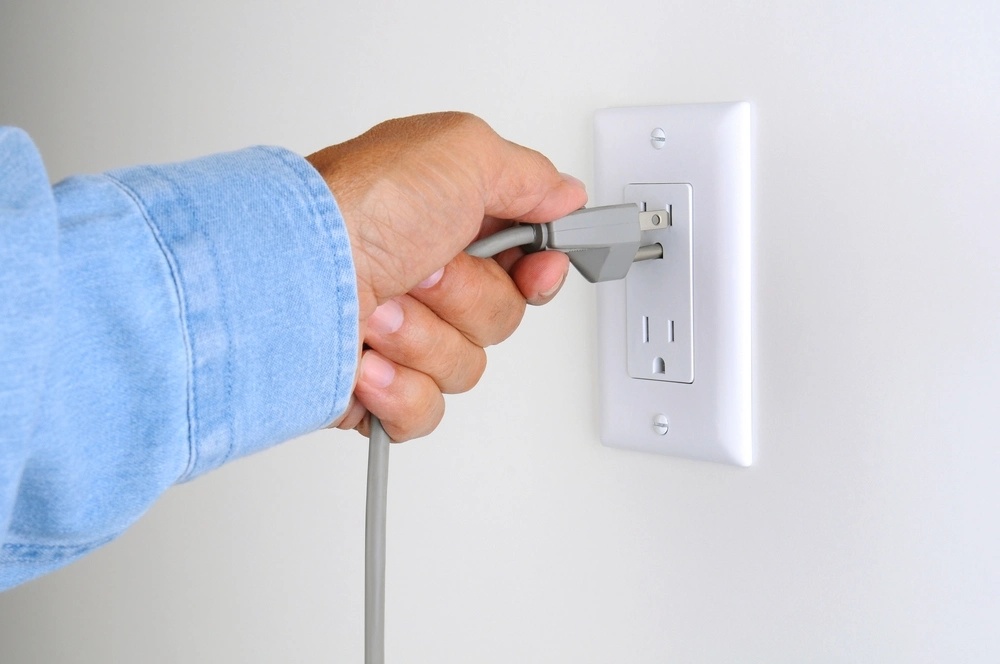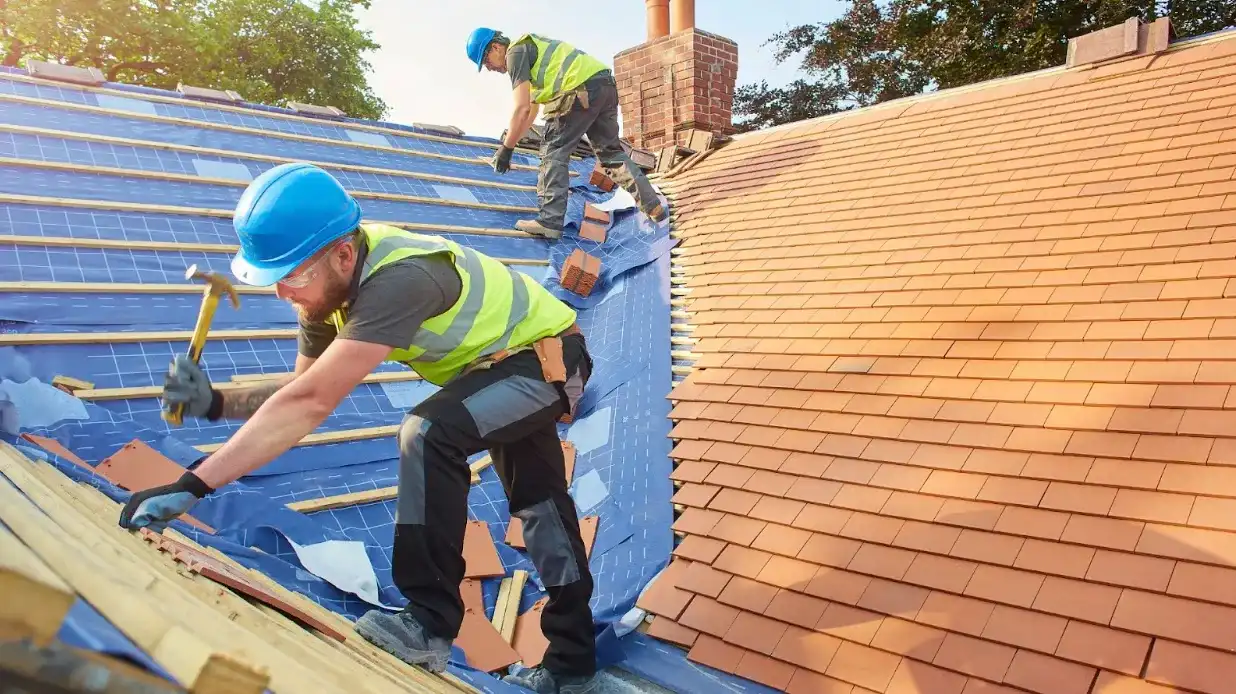Upgrading a business space to include GFCI outlets is essential for both safety and compliance with electrical standards. These outlets protect against electrical shock, particularly in areas prone to moisture. Identifying the right locations for installation is critical to maximizing their effectiveness. For those wondering how to upgrade to GFCI outlets, a systematic approach guarantees proper installation. Understanding the process and potential pitfalls can make all the difference in achieving a safe environment. The next steps will clarify what businesses need to know to proceed effectively.
Key Takeaways
- Identify high-risk areas like kitchens, bathrooms, and outdoor spaces for GFCI outlet installation to enhance safety and compliance.
- Turn off power at the circuit breaker before removing existing outlets and connecting new GFCI outlets.
- Correctly identify line and load wires to ensure proper connection and functionality of the GFCI outlet.
- Use weather-resistant GFCI outlets for outdoor installations to maintain safety in wet conditions.
- Regularly test GFCI outlets post-installation to confirm their operational integrity and prevent electrical hazards.
Understanding the Importance of GFCI Outlets in Business Spaces
In environments where water and electricity intersect, such as kitchens and bathrooms, the installation of Ground Fault Circuit Interrupter (GFCI) outlets becomes essential for safety and compliance. GFCI outlets are designed to immediately cut off electrical power when they detect an imbalance in electrical current, considerably reducing the risk of electric shock. This protective technology is essential in business spaces, where employee and customer safety must be prioritized. Additionally, GFCI outlets help businesses adhere to electrical codes, ensuring compliance with local regulations. By upgrading to GFCI outlets, business owners not only enhance safety but also foster a sense of security and trust among patrons and staff, promoting a safer and more welcoming environment. Understanding the importance of GFCI outlets is critical for responsible management.
Identifying Locations for GFCI Outlet Installation
Identifying suitable locations for GFCI outlet installation is a fundamental step in ensuring safety and compliance within a business environment. GFCI outlets are essential in areas where water and electricity may coexist, such as kitchens, restrooms, and outdoor spaces. Moreover, they should be installed in laundry rooms and any areas prone to moisture. It is imperative to assess high-risk zones, including basements and garages, where equipment may be exposed to spills or leaks. Additionally, compliance with local electrical codes mandates specific placements to mitigate hazards. Establishing these locations not only enhances safety but also fosters a culture of responsibility among employees, demonstrating a commitment to workplace safety. Understanding how to upgrade to GFCI outlets is vital for effective implementation.
Step-by-Step Guide on How to Upgrade to GFCI Outlets
Upgrading to GFCI outlets requires a systematic approach to guarantee proper installation and functionality. First, verify the power is turned off at the circuit breaker. Next, remove the existing outlet by unscrewing it from the electrical box and disconnecting the wires. Identify the line and load wires, which will connect to the GFCI outlet. Connect the line wires to the appropriate terminals on the GFCI outlet, ensuring a secure fit. If applicable, connect the load wires to extend GFCI protection to additional outlets downstream. Once all connections are made, carefully tuck the wires back into the box and secure the GFCI outlet with screws. Finally, restore power and test the outlet using the built-in GFCI test feature to confirm functionality.

Common Mistakes to Avoid When Installing GFCI Outlets
Installing GFCI outlets can enhance safety and compliance, but several common mistakes can undermine their effectiveness. One prevalent error is failing to properly identify the line and load wires, which may lead to malfunctioning outlets. Another mistake involves neglecting to adhere to the manufacturer’s instructions, risking improper installation. Additionally, overlooking the need for a weather-resistant GFCI outlet in outdoor settings can compromise safety. Using the wrong amperage rating for the outlet can also result in circuit overloads, while inadequate wiring connections may cause arcing and fire hazards. Finally, not testing the GFCI outlets after installation can leave users unaware of potential failures. Awareness of these pitfalls is essential for anyone looking to upgrade to GFCI outlets effectively.
Ensuring Compliance With Electrical Safety Standards
Guaranteeing compliance with electrical safety standards is essential for any business space, as it not only protects employees and customers but also mitigates potential legal liabilities. Adhering to these standards fosters a culture of safety and accountability. Businesses must prioritize the following:
- Regular Inspections: Conducting routine checks on electrical systems guarantees they meet the necessary codes.
- Upgrading Outlets: Replacing standard outlets with GFCI outlets is critical for preventing electrical shocks, especially in wet areas.
- Employee Training: Educating staff about electrical safety practices creates a knowledgeable workforce committed to a safe environment.
Frequently Asked Questions
What Tools Are Needed for Installing GFCI Outlets?
To install GFCI outlets, an electrician typically requires tools such as a screwdriver, wire stripper, voltage tester, pliers, and a drill. These tools guarantee accurate installation and compliance with safety standards in electrical work.
Can I Replace Standard Outlets With GFCI Outlets Myself?
Individuals can replace standard outlets with GFCI outlets themselves, provided they possess basic electrical knowledge and adhere to safety protocols. Proper tools and understanding of circuit connections are essential for a successful installation and compliance.
How Often Should GFCI Outlets Be Tested?
GFCI outlets should be tested monthly to guarantee proper functionality. Regular testing helps identify any issues, assuring continued safety and compliance in electrical systems, ultimately contributing to a secure environment for all users.
What Are the Signs of a Faulty GFCI Outlet?
Signs of a faulty GFCI outlet include frequent tripping, failure to reset, a buzzing or humming sound, discoloration, or visible damage. Such indicators warrant immediate inspection and potential replacement to guarantee safety and compliance.
Are GFCI Outlets Weatherproof for Outdoor Use?
GFCI outlets designed for outdoor use are typically weatherproof, featuring protective enclosures and secure seals. Ensuring compliance with local codes is essential for safety, as these outlets help prevent electrical hazards in wet environments.
Conclusion
To summarize, upgrading to GFCI outlets is essential for ensuring safety and compliance in business environments. By understanding their importance, identifying suitable locations for installation, and following a systematic installation process, businesses can greatly reduce electrical hazards. Avoiding common pitfalls during the installation further enhances safety. Ultimately, implementing GFCI outlets not only adheres to electrical safety standards but also promotes a workplace culture focused on the well-being of employees and customers alike.
You May Also Like To Read:





